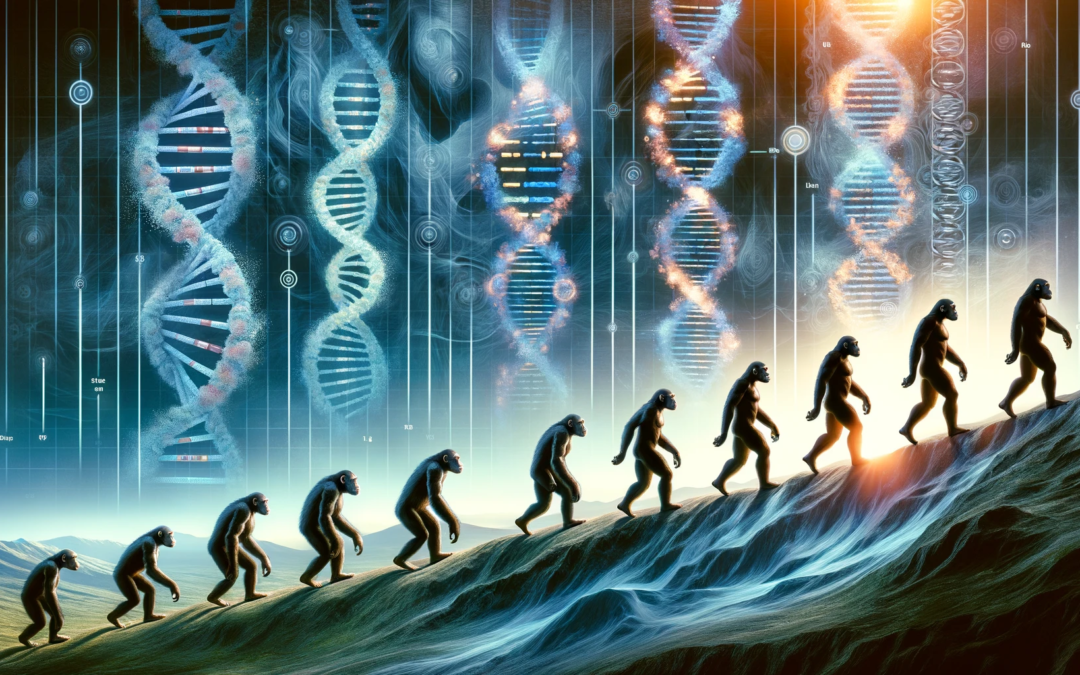In the realm of human evolution, mysteries and curiosities abound, creating a tapestry of theories and speculations that try to unravel the unique journey of mankind. Among these, one of the most intriguing ideas pertains to the human chromosome 2, a topic that has sparked both scientific and philosophical debates. The theory posits that chromosome 2 was removed or fused, leading to humans having 23 pairs of chromosomes instead of 24, 26, or 28 like other primates. This article delves into this theory, examining its scientific basis, implications, and the broader context of human evolution.
The Genetic Puzzle: Chromosome 2 and Its Origins
Chromosome 2 in humans is a product of an end-to-end fusion of two ancestral ape chromosomes. This fusion is evidenced by the presence of vestigial centromeres and telomeres within it. In apes like chimpanzees, gorillas, and orangutans, these chromosome segments exist as two separate entities, namely chromosomes 12 and 13 in chimpanzees. The fusion event in the human lineage, resulting in chromosome 2, is a significant point of distinction from our closest genetic relatives.
Decoding the Fusion: Traces in the Human Genome
The human chromosome 2 bears telltale signs of its fused origin. At its center, it has remnants of telomeres, which are typically found at the ends of chromosomes. These telomere sequences are not functional but serve as genetic relics of the fusion process. Additionally, chromosome 2 has two centromeres, with one being inactive. This inactive centromere corresponds to the centromere of one of the ancestral ape chromosomes.
Evolutionary Implications: How Did This Affect Humankind?
The fusion event leading to the formation of chromosome 2 had profound evolutionary implications. This genomic alteration may have contributed to the divergence of the human lineage from other primates. It is hypothesized that this fusion could have led to changes in gene regulation and expression, possibly influencing traits such as brain development and function, which are pivotal in defining human uniqueness.
Debates and Controversies: Challenges to the Theory
While the chromosomal fusion theory is widely accepted in the scientific community, it is not without its controversies. Some argue that the evidence for the fusion is circumstantial and does not conclusively prove that it was a pivotal event in human evolution. Additionally, there are debates on whether this chromosomal change was a cause or consequence of human evolution.
The Bigger Picture: Chromosome 2 in the Context of Human Evolution
The story of chromosome 2 is a single piece in the vast puzzle of human evolution. It underscores the complexity of evolutionary processes, where genetic changes interplay with environmental factors and chance events to shape the trajectory of a species. Understanding the role of chromosome 2 offers insights into not just where we came from, but also into the very nature of what makes us human.
Concluding Thoughts: A Fusion of Science and Wonder
The theory of chromosome 2’s fusion is a fascinating example of how genetics can provide glimpses into our past. It stands as a testament to the power of evolutionary processes and the intricacies of our genetic heritage. As we continue to unravel the mysteries of our DNA, we edge closer to understanding the full story of human evolution, a journey marked by twists, turns, and the unexpected. In the awe-inspiring narrative of human development, chromosome 2 serves as a reminder of our shared ancestry with other primates and the unique path we have traversed. It is a story that combines science with a sense of wonder, encouraging us to look back at our origins and forward to what we might become.










